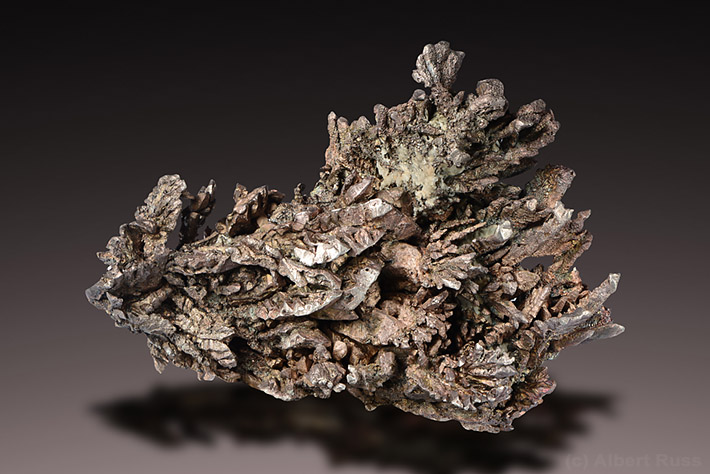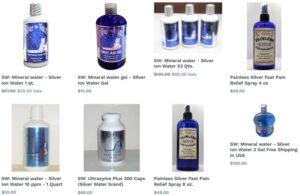Let’s take a look at colloidal silver and ionic silver. What is colloidal silver and what is ionic silver, and how do they work individually and together?
There are many types of silver products besides Silver Wain Water. The are many types of silver. In antiquity, silver pitchers, other silver food vessels, and silverware were used mostly by the upper class because of the cost to promote health and keep them from getting sick. Silver is an excellent natural antibacterial agent. There is fine silver at .999 grade, and sterling silver at .925, pre-1965 US silver dollars are 90% silver & 10% copper (0.77-0.78 troy ounces), and these silver dollars were used to place in milk to keep it from spoiling before the proliferation of refrigeration. In terms of silver water, very small particles will be in play.
Colloidal Silver
Colloidal silver is silver particles to which silver ions attach themselves and do their work from the colloidal particle. Colloids are small nano-sized particles, sometimes referred to as angstrom-sized particles, of metallic silver. These tiny particles do not mix with others, are complete, and do not combine with other compounds.
Silver colloids survive as they travel about throughout the human body enabling them to do their work. Nano-sized silver particles flow freely in the bloodstream and are not affected by hydrochloric acid found in the stomach. This freedom of movement helps colloidal silver to annihilate pathogens that may be found nearly anywhere inside the body.
Colloidal silver stays within the body for an extended period of time, which allows it to accomplish more over time. Nano-sized silver particles do not gather and build up inside the human body and are therefore considered not toxic.
There is a real benefit in knowing what kind of silver you are exposing your body to and how much silver exists in the product you are using. The metallic particles are necessary to provide the greatest benefit over time due to their particulate surface area.
Ionic Silver
Unlike metallic silver particles, colloidal silver, angstrom silver, and ionic silver is not the same as colloidal silver, and it is obvious by their nomenclature. Simply stated, silver ions are ions, not particles. Just the ions of silver. And as you might expect, they do act differently than particles.
A silver ion is a silver atom with one less electron. So, a silver atom without one of its outer electrons is no longer a complete atom, but an ion, a silver ion. In its ionic form, the silver ion will combine with other elements to produce compounds.
Within the human body, silver ions are likely to combine with chloride to form silver chloride. While silver ions are water soluble, silver chloride is not soluble, ergo this compound does not dissolve. Silver colloids do not combine with chloride and therefore do not make silver chloride.
Rather than lingering inside the body, like silver colloids, silver chloride is processed by the kidneys and leaves via the urinary tract, with no trace left behind. Therefore, concurrent infusion or ingestion of silver ions is necessary because they do not stay in the bloodstream very long.
Ionic silver is so small that there is little or no chance of contracting argyria which is the silver-related condition that can turn skin pigment blue or gray. Though high concentrations of ionic silver, say over 100 parts per million, could cause argyria.
It is that reactivity is due to the missing electron that enables silver ions to suffocate and eliminate some 650 pathogens.
Ionic silver is created by the process of electrolysis.
Left to themselves, silver ions are powerful pathogen killers.
Silver Wain Water is created by a high-energy electric source equivalent to manmade lightning based on Tesla technology that creates both electrically charged ions and silver particles.

